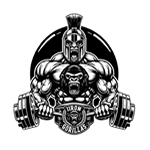
In the bodybuilding and athletic community, Methyl Trenbolone (Metribolone) is regarded as an extremely potent and harsh anabolic steroid, known primarily for its exceptional strength and mass-building capabilities. It’s considered one of the strongest oral steroids available, often compared to its parent compound, Trenbolone, but with increased hepatoxicity due to its methylated form. Typically used for short-term gains in strength and size, it’s commonly associated with significant side effects, including severe liver toxicity.
Seasoned steroid users approach Methyl Trenbolone with a degree of caution and respect, understanding its powerful anabolic and androgenic effects but also recognizing the high risks, particularly regarding liver health. In comparison to other steroids, it is arguably the most liver-toxic anabolic steroid available. It’s often seen as a ‘last resort’ or extreme option for experienced users seeking dramatic physique changes in very short periods, but not without acknowledging the substantial health risks it poses.

Methyl Trenbolone History
Methyl Trenbolone, also known by its chemical name Metribolone, was first developed in the 1960s. Its development was not primarily intended for bodybuilding or athletic enhancement; rather, it was explored for potential medical applications. This powerful anabolic-androgenic steroid is a derivative of Trenbolone, which itself is a potent anabolic steroid derived from Nandrolone. The key distinction with Methyl Trenbolone lies in its modification: the addition of a methyl group at the 17th carbon position, designed to allow oral administration. This structural change significantly increases its bioavailability when taken orally but also makes it considerably more hepatotoxic (liver toxic) than Trenbolone.
In the medical field, Methyl Trenbolone was initially researched as a potential therapeutic agent for conditions such as muscle wasting and perhaps even some forms of cancer due to its strong anabolic properties. However, its clinical use was limited and eventually overshadowed by its potential for causing severe liver toxicity. Consequently, it never gained widespread acceptance or approval for medical use, particularly in humans.
In the realm of bodybuilding and athletics, Methyl Trenbolone gained notoriety as one of the most potent anabolic steroids. Its appeal lies in its ability to promote significant gains in muscle mass and strength within a very short time frame. However, this comes at a cost: Methyl Trenbolone is known for its harsh side effects, particularly its hepatotoxicity, which is much more pronounced than most other oral steroids. This has led to its status as a kind of ‘last resort’ steroid, used by seasoned bodybuilders and athletes who are willing to take extreme risks for rapid physique enhancements. The use of Methyl Trenbolone is typically approached with caution, and it is often reserved for short-term use due to its potential health risks. Despite its potency, the high risk of severe side effects, particularly liver damage, makes it a controversial and often discouraged choice within the bodybuilding community.
Early Medical Uses and Pharmaceutical Market Introduction:
Brief Clinical Investigation: In the late 1960s and early 1970s, Methyltrienolone was investigated briefly for the treatment of advanced breast cancer in women. However, it exhibited signs of severe hepatotoxicity even at very low dosages, leading to the discontinuation of its development for medical use.
Lack of Approval for Medical Use: Metribolone (Methyltrienolone) was never approved for medical use, largely due to its liver toxicity, even at low doses. Despite its potential in the treatment of advanced breast cancer, the development was ultimately abandoned because of these safety concerns.
Methyltrienolone, stands out in steroid history for its development primarily as a research compound rather than for therapeutic use. Its modification from Trenbolone for oral administration led to significant hepatotoxicity concerns, which ultimately limited its application to scientific research and prevented its introduction into the medical market for human use.
Primary Usage in Bodybuilding
Muscle Mass Gain: Trenbolone is highly valued for its ability to promote significant muscle mass gain, making it a popular choice for bulking cycles.
Strength Enhancement: Users often report substantial increases in strength, which is a key reason for its use among powerlifters and strength athletes.
Fat Loss: Trenbolone is also noted for its effectiveness in aiding fat loss, making it a versatile choice for both bulking and cutting phases.
Not for Beginners: Due to its strength and potential side effects, Trenbolone is not recommended for steroid beginners.
Not for Women: Oral Trenbolone is not recommended for women due to its high risk of virilization and severe side effects.
Dosages for Bodybuilding
Oral Trenbolone, also known as methyltrienolone, is a potent anabolic steroid used in the bodybuilding community despite lacking clinical dosing guidelines due to its status as a non-approved substance for human use. The dosages used by bodybuilders and athletes vary but are generally quite low due to its high potency and potential toxicity:
General Dosage: A common approach is to take oral Trenbolone 3 times a day, with doses spaced every 4.5 to 6 hours. The maximum daily dose typically ranges from 750 to 1000 mcg . We have seen some bodybuilders report using as much as 2mg (2,000mcg), but this is rare and not recommended.
Effective Lower Dose: Some users find that a daily dose of 250 mcg is effective. If higher doses are used, it’s recommended to split them throughout the day, with no need to exceed 1000mcg per day.
Commonly Used Dose: A daily dosage of around 500 mcg is common, with 750 mcg often considered the “sweet spot” by many users. However, doses of 1 mg per day have been associated with side effects like lethargy, especially by the third week of use.
Split Dosage: It’s common to split the daily dosage into smaller doses taken throughout the day, given every 4.5 to 6 hours.
Note: Methyl Trenbolone is used in microgram amounts, less than a milligram daily. Here is a design guide for you to keep in mind:
250mcg = 0.25mg
750mcg = 0.75mg
1,000mcg = 1mg
Cycle Length
Due to its liver toxicity, the duration of use is typically very limited, preferably to 2-4 weeks. Some users may start with a lower dose of 250 mcg per day and increase it to 500 mcg for the last two weeks.
Precautions
Using Methyl Trenbolone, a highly potent anabolic steroid, requires strict precautions due to its significant risk profile. Here’s a comprehensive list of precautions and potential side effects:
Medical Supervision: Get blood work done to monitor your liver enzymes and cholesterol.
Liver Protection: Due to its extreme hepatotoxicity, using N2Guard as your liver support supplement and avoiding other liver-stressing substances is vital.
Avoid Stacking: Especially with other oral steroids, to reduce liver strain. Do not stack with other oral steroids!
Dosage Control: Adhering to the lowest effective dose for the shortest possible duration. Which is about 250mcg or 0.25mg
Avoid Alcohol: To reduce additional liver stress.
Stay Hydrated: To aid in bodily processes and liver function.
Heart Health: Regular cardiovascular exercise and monitoring due to potential strain on the heart.
Diet Considerations: A balanced diet with controlled sodium intake to manage blood pressure.
Side Effects:
Liver Damage: Significant hepatotoxicity, potentially leading to liver disease or failure. It is more toxic than most other steroids, so always use N2Guard with it.
Cardiovascular Issues: Increased risk of heart disease, hypertension, and cholesterol imbalances.
Androgenic Effects: Acne, hair loss (male pattern baldness), and hirsutism.
Estrogenic Effects: Despite its nature of not aromatizing, it might still cause gynecomastia via its action on the progesterone receptor.
Mood Swings and Aggression: Often referred to as “roid rage.” Methyl Trenbolone will make you particularly aggressive.
Suppression of Natural Testosterone: Can lead to hypogonadism and fertility issues.
Kidney Stress: Due to increased workload and blood pressure changes.
Increased Risk of Prostate Enlargement.
Insomnia and Sleep Disturbances
Appetite Fluctuations: Increases or decreases.
Increased Red Blood Cell Count: Could lead to blood thickening.
Muscle and Joint Pain.
Skin Changes: Oily skin and severe acne.
Gastrointestinal Issues: Nausea, vomiting, and stomach discomfort.
Psychological Effects: Including anxiety and depression.
Changes in Libido: Fluctuations in sexual desire.
Water Retention: Leading to edema.
Sweating and Night Sweats: Due to hormonal fluctuations.
Voice Deepening: Particularly in female users.
Clitoral Enlargement: In female users.
Menstrual Irregularities: In female users.
Dependency and Abuse Potential.
Given the severe nature of these side effects and the high risk associated with Methyl Trenbolone use, it’s generally advised only for very experienced users with a clear understanding of the risks and proper steroid use. The risks often outweigh the benefits, and its use is highly controversial, even in bodybuilding circles. Always prioritize health and safety over quick gains.


